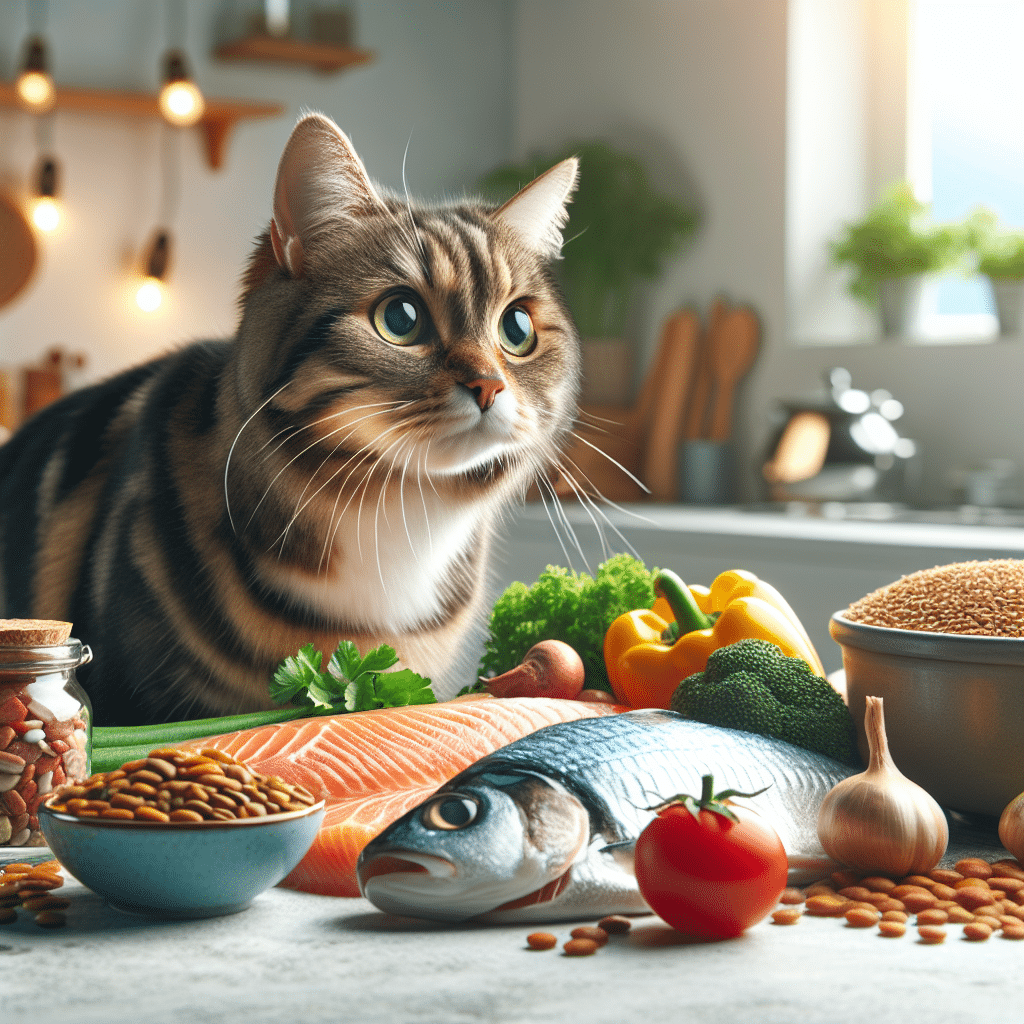Wholesome Homemade Fish Cat Food: A Healthier Choice for Your Feline
Understanding Your Cat’s Nutritional Needs
Cats are obligate carnivores, which means they thrive on a diet rich in animal proteins. A balanced diet comprises proteins, healthy fats, vitamins, and minerals. While commercial cat foods can offer convenience, homemade options allow for higher quality ingredients tailored to your cat’s specific dietary needs. Fish is an excellent source of lean protein and provides essential omega-3 fatty acids, which promote a healthy coat and skin.
Benefits of Homemade Fish Cat Food
-
Quality Control: By making your own cat food, you can ensure the quality and source of ingredients. This is especially important with fish, which can come from various sources with varying degrees of sustainability and quality.
-
Customized Nutrition: Homemade cat food can be tailored for specific health needs. Whether your cat is overweight, has allergies, or requires a specific nutrient balance, you have full control.
-
Taste Factor: Many cats are picky eaters, and homemade recipes can be more appealing than commercial options. Fresh ingredients can enhance the flavor and aroma.
-
Avoiding Fillers: Commercial cat food often contains fillers and artificial preservatives. Homemade options allow you to avoid these additives, focusing on natural, wholesome ingredients.
Key Ingredients for Fish Cat Food
1. Fish: The main protein source. Options include salmon, tuna, sardines, or mackerel. When selecting fish, choose those that are low in mercury and sustainably sourced.
2. Brown Rice or Quinoa: These grains provide necessary carbohydrates and fiber, aiding in digestion.
3. Vegetables: Incorporate cat-safe vegetables like peas, carrots, or spinach for additional vitamins and minerals. These should be cooked and mashed to aid digestibility.
4. Supplements: Essential fatty acids (like fish oil), taurine (an amino acid crucial for heart and vision health), and vitamin E can be added to ensure your cat receives a balanced diet.
5. Water or Broth: To enhance moisture content, which is vital for a cat’s hydration, especially if they tend not to drink enough water.
Wholesome Homemade Fish Cat Food Recipe
Ingredients:
- 1 cup of cooked salmon or tuna (canned in water, without added salt)
- ½ cup of brown rice or cooked quinoa
- ½ cup of peas (fresh or frozen)
- ¼ cup of carrots (cooked and mashed)
- 1 tablespoon of fish oil (for omega-3)
- 1 teaspoon of taurine supplement (consult with your vet)
- ½ cup of low-sodium chicken broth or water
Preparation Steps:
-
Cook the Grain: Prepare brown rice or quinoa according to package instructions. Ensure it’s soft and easy to chew.
-
Prepare the Vegetables: Boil or steam the peas and carrots until tender. Mash the vegetables to small pieces to make them easier for your cat to digest.
-
Combine Ingredients: In a mixing bowl, combine the cooked fish, rice or quinoa, mashed vegetables, and fish oil.
-
Mix Well: Stir the mixture thoroughly until all ingredients are well combined.
-
Moisten: Add low-sodium chicken broth or water to achieve the desired consistency your cat prefers. Mixed thoroughly.
-
Serve & Store: Serve a portion suitable for your cat’s dietary needs. Store the remaining mixture in an airtight container in the refrigerator for up to 3 days or freeze for longer storage.
Considerations for Serving Fish to Cats
-
Moderation: Fish should not be the sole food source; aim for variety in your cat’s diet. Rotate protein sources and include different meats to provide a balanced nutritional profile.
-
Watch for Allergies: Introduce fish gradually. Monitor your cat for any adverse reactions, such as gastrointestinal upset or skin issues. If you notice any signs of allergies, consult your veterinarian.
-
Avoid Certain Fish: Never use fish that are high in mercury or toxins, such as shark or swordfish. Opt for smaller fish varieties that are lower in toxicity.
Tips for Making Your Own Cat Food
-
Consult Your Vet: Before changing your cat’s diet, consult your veterinarian to ensure the homemade food meets their specific health needs.
-
Safety First: Always thoroughly rinse and cook fish to kill parasites. Avoid any seasoning or additives that could be harmful to cats, such as onions or garlic.
-
Use Fresh Ingredients: Freshness affects the nutritional value. Choose high-quality, fresh ingredients for the best results.
-
Portion Control: Calculate the appropriate portion sizes based on your cat’s weight, age, and activity level. Overfeeding can lead to obesity and related health issues.
Storing Homemade Fish Cat Food
Proper storage is essential to ensure the food remains safe for your cat. Use glass containers or airtight plastic containers. If freezing, consider using ice cube trays for single-serving size pieces, making it convenient to thaw only what you need.
Final Note on Homemade Fish Cat Food
Creating wholesome homemade fish cat food can be a rewarding endeavor that promotes your cat’s health and happiness. By utilizing high-quality ingredients, you ensure your feline receives the nutrition they require while also indulging their taste preferences. As you embark on this culinary journey, remember to keep things balanced and consult with your veterinarian to achieve optimal health for your furry friend. Each cat is unique, and understanding their individual needs will lead to a long, healthy life together.
